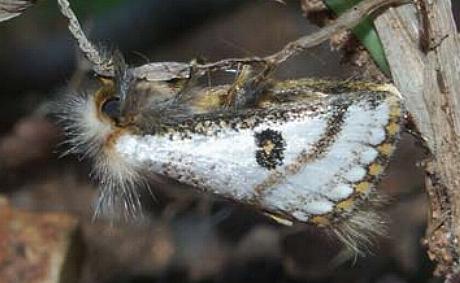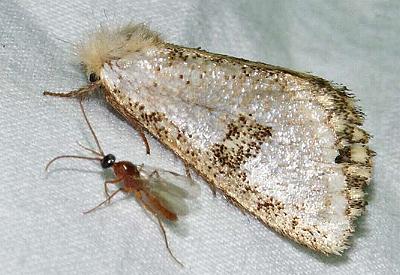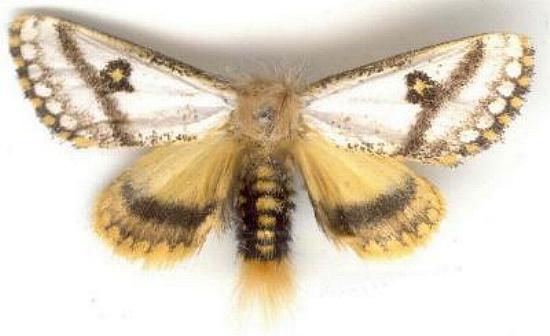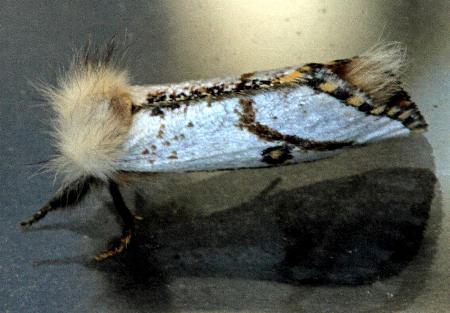
male
Photo: courtesy of Buck Richardson, from
Tropical Queensland Wildlife from Dusk to Dawn Science and Art
The Caterpillars of this species have been found feeding communally on
the foliage of :
Poplar Gum ( Eucalyptus playphylla,
MYRTACEAE ).
The caterpillars feed nocturnally,
hiding by day under bark or ground debris.
The male adult moths have forewings that are pearly white
with a beaded margin, each having a brown submarginal line
and central dark patch with a yellow spot in the middle.
The hindwings are yellow with a dark submarginal band.
The abdomen is brown with a yellow tuft of hairs on the tip.

female, with clever parasitic wasp waiting for her to lay eggs
(Photo: courtesy of Buck Richardson, Kuranda, Queenland)
The females look rather different.
They have fawn speckled forewings with a brown
costa and central spot.
The hindwings are plain dark brown.
The wings have beaded margins.
The abdomen is brown with yellow markings.

male
(Photo: courtesy of
Graeme Cocks, Townsville, Queensland)
Both sexes have a wingspan of about 3 cms.

male
(Photo: courtesy of Kinta Walker, Lockwood, Victoria)
This species has been found in :
Queensland,
New South Wales,
Victoria, and
South Australia.
Further reading :
Buck Richardson,
Tropical Queensland Wildlife from Dusk to Dawn Science and Art,
LeapFrogOz, Kuranda, 2015, p. 179.
A. Jefferis Turner,
New Australian Lepidoptera,
Transactions of the Royal Society of South Australia,
Volume 26 (1902), p. 183.
(updated 11 October 2011, 2 September 2025)









